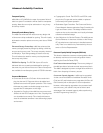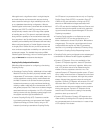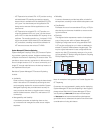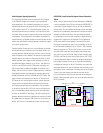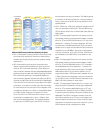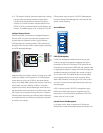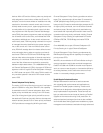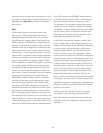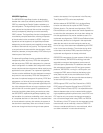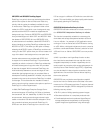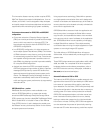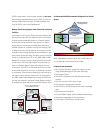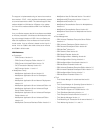48
capacity planning and application stress testing. For more
information on Parallel Sysplex Professional Services, visit
IBM’s Web site at ibm.com/servers/eserver/zseries/pso/
services.html.
GDPS
GDPS supports both the synchronous Peer-to-Peer
Remote Copy (PPRC) as well as the asynchronous
Extended Remote Copy (XRC) forms of remote copy.
The GDPS solution, based on Peer-to-Peer Remote Copy
(PPRC), referred to as GDPS/PPRC, is designed with the
attributes of a continuously availability solution. PPRC is a
hardware solution that is designed to synchronously mirror
data residing on a set of disk volumes, called the primary
volumes in site 1, to secondary disk volumes on a second
system in site 2. Only when the primary storage subsystem
receives “write complete” from the secondary storage sub-
system is the application I/O signaled completed. GDPS/
PPRC complements a multisite Parallel Sysplex environment
by providing a single, automated solution to dynamically
manage disk and tape storage subsystem mirroring, pro-
cessors, and network resources designed to allow a busi-
ness to attain “continuous availability” and near transparent
business continuity/disaster recovery without data loss.
GDPS/PPRC provides the ability to perform a controlled
site switch for both planned and unplanned site outages,
while maintaining data integrity across multiple storage
subsystems. GDPS/PPRC is designed to be application
independent and therefore is expected to be able to cover
the customer’s complete application environment. GDPS/
PPRC is designed to allow a customer to meet a Recovery
Time Objective (RTO) of less than an hour, a Recovery Point
Objective (RPO) of no data loss, and protects against met-
ropolitan area disasters (up to 40 km between sites). On the
other hand, the GDPS solution based on Extended Remote
Copy (XRC), referred to as GDPS/XRC, has the attributes
of a Disaster Recovery solution. XRC is a combined hard-
ware and software asynchronous remote copy solution.
The application I/O is signaled completed when the data
update to the primary storage is completed. Subsequently,
a DFSMSdfp
™
component called System Data Mover (SDM),
typically running in site 2, is designed to asynchronously
offl oad data from the primary storage subsystem’s cache
and updates the secondary disk volumes.
In GDPS/XRC, the production system(s) located in site 1
can be a single system, multiple systems sharing disk, or
a base or Parallel Sysplex cluster. GDPS/XRC is designed
to provide a single, automated solution to dynamically
manage storage subsystem mirroring (disk and tape)
to allow a business to attain “near transparent” disaster
recovery with minimal data loss. GDPS/XRC is designed to
provide the ability to perform a controlled site switch for an
unplanned site outage, maintaining data integrity across
multiple volumes and storage subsystems. GDPS/XRC is
designed to allow a customer to meet a RTO of one to two
hours, an RPO of less than a minute, and helps protect
against metropolitan as well as regional disasters, since
the distance between sites is unlimited. XRC can use
either common communication links and channel extender
technology or dark fi ber as the connectivity between sites.
GDPS/XRC is designed to be application independent and
therefore is capable of covering the customer’s complete
application environment.
GDPS requires Tivoli
®
NetView
®
for z/OS, Tivoli System
Automation for z/OS, and remote copy technologies.
Note: Dark fi ber refers to dedicated strands of fi ber optic
cable with no electronics between the ends (source and
destination).



